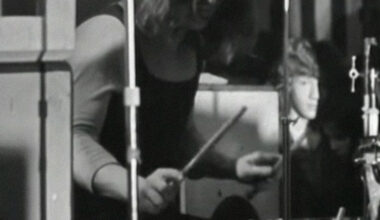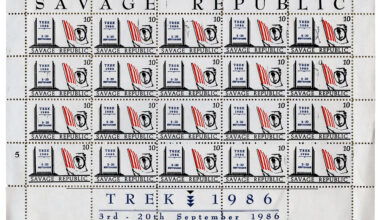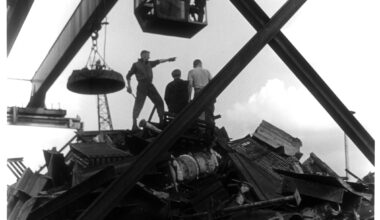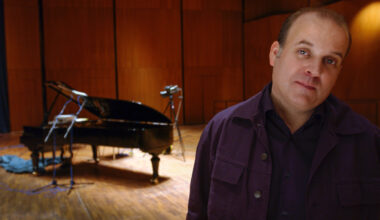We’re heading back to the sizzling summer of 1976, where one-time Roxy Music colleagues Phil Manzanera and Brian Eno are heading up the intense but brief experiment they called 801

In the summer of 1976, as Britain enjoyed the longest stretch of hot weather on record – “Phewnomenal!” declared the Daily Express – and The Clash and The Damned played their first ever live gigs, four men gathered in a cottage in rural Shropshire. They were all significant figures on the UK music scene and they were there at the instigation of Phil Manzanera, guitarist with Roxy Music, who were on a break at the time. Brian Eno had played alongside Manzanera in the earliest days of Roxy. Bill MacCormick had been a member of Quiet Sun, Manzanera’s pre-Roxy band, before joining Robert Wyatt in Matching Mole. The fourth man was Bill’s brother Ian, who had written lyrics for Quiet Sun but was best known as Ian MacDonald, assistant editor of the NME.
Manzanera, Eno and MacCormick had been discussing the idea of recording together for a while, but during their stay in Shropshire they came up with an idea for a band that put their original plans on the back-burner. The result was 801, named after a reference in ‘The True Wheel’ on Eno’s ‘Taking Tiger Mountain (By Strategy)’ album – “We are the 801 / We are the central shaft” – and an outfit quite unlike any other, either before or since.
“It was a crazy project,” admits Phil Manzanera almost 40 years on. “There were basically two premises for 801. The first was that it would be a band with a limited time scale, a band that would only last for six weeks, which was a very Eno type of concept. The second was that the line-up would bring together people who were highly technical musicians with others who were totally against even the notion of technique. The whole thing was designed as an experiment, both in terms of music and format, with no purpose other than to see what happened.”
Keyboardist Francis Monkman from Curved Air and slide guitarist Lloyd Watson, who had played on Eno’s ‘Here Come The Warm Jets’, were hastily recruited and the line-up of 801 was completed by a then unknown 18-year old drummer called Simon Phillips. Manzanera booked some rehearsal time at Island Records, where they started reworking tracks from Manzanera and Eno’s solo albums, plus a couple of old Quiet Sun songs and a couple of covers. And as the sessions got underway, Manzanera arranged for the group to play three gigs at the end of the six-week period. The first was a low-key set at West Runton Pavilion in Norfolk on 26 August, which was followed by an appearance at the 1976 Reading Festival two days later. The Reading gig was billed as “Phil Manzanera”, with Eno and their other associates’ names underneath in smaller letters.
“Yes, quite right that everybody else’s names were smaller than mine,” jokes Manzanera. “I suppose the organisers billed it like that because Roxy were at their height at the time whereas nobody knew what the hell 801 was, let alone what we might sound like. The gig was very nearly a disaster because Francis Monkman got stuck in a traffic jam and only just made it. We thought we were going to have to play without him right up until five minutes before we went on. The relief of him turning up meant we actually played quite well. John Peel said some lovely things about us afterwards.”
The third and final gig was a headlining show at the Queen Elizabeth Hall in London on 3 September. The set was recorded and released by Island as ‘801 Live’ a few weeks later and stands as a fascinating testimony to the intense if brief experiment that was 801. It’s almost a sort of bridging album, with heavy doses of prog, strong hints of new wave, and plenty of innovative electronic sorcery. The version of Manzanera’s ‘Diamond Head’ is head-spinningly beautiful and proves that there’s so much more to guitars than big riffs and long solos, while their take on Eno’s ‘Third Uncle’ is as fierce as anything you’d hear at a punk club over the next couple of years. Of particular note is ’TNK’, a dramatic version of The Beatles’ ’Tomorrow Never Knows’ underpinned with glorious synth washes.
“That was always one of my favourite Beatles tracks and at that point nobody else had covered it,” says Manzanera. “It sort of felt like an outrageous thing to do, but I thought it was perfect for that particular combination of musicians. Eno had a cassette of random stuff he’d recorded from the radio, which he turned on when we started playing ’TNK’ and it comes in and out throughout track. So we utilised some of the ideas behind the original ‘Tomorrow Never Knows’ in terms of using extraneous sounds, but then we had all this great musicianship too.
“The Queen Elizabeth Hall gig went very well and people seemed to like it. They seemed to like it a lot. I remember thinking, ‘Oh, that’s it, it’s over, that’s not a very clever career plan, is it?’. But then we all got on with other things, exactly as we’d planned to do. Something I was especially pleased about was how much interest there was in Simon Phillips after 801. He was incredible for his age. I mean, ‘801 Live’ is worth getting for the drums alone. Everybody who saw Simon at that gig thought, ‘Bloody hell, who’s this guy?’ and he got so much work as a result, with Mick Jagger, Robert Fripp, Stanley Clarke and many more. These days, he’s one of the most famous drummers in the world.”
That wasn’t quite it for 801, though. There was actually a second release, a studio album called ‘Listen Now’ which came out in 1977, but this was essentially a Manzanera, MacCormick and MacDonald record with a bit of help from guests such as Godley & Creme and Tim Finn from Split Enz. Manzanera admits that they just used the name 801 to capitalise on the success of the Reading and Queen Elizabeth Hall shows.
“801 was brilliant fun and I’m still in touch with everybody who was involved, but there’s no question of a reunion,” notes Manzanera, who co-produced David Gilmour’s recent ‘Rattle That Lock’ album and is currently a key member of the Pink Floyd man’s live set-up. “For one thing, there’s no way I’d even suggest something like that to Eno. It’s not in his nature to do the same thing twice. And although 801 did feel more like a band than a project, we really couldn’t have stayed stayed together any longer than six weeks without killing each other. The technical people wanted it more technical and the others were saying, ‘Nooooo, stop playing so many notes – simplify, simplify, simplify’. When I think of it, I find it quite amazing that we managed to last as long as six weeks.”





